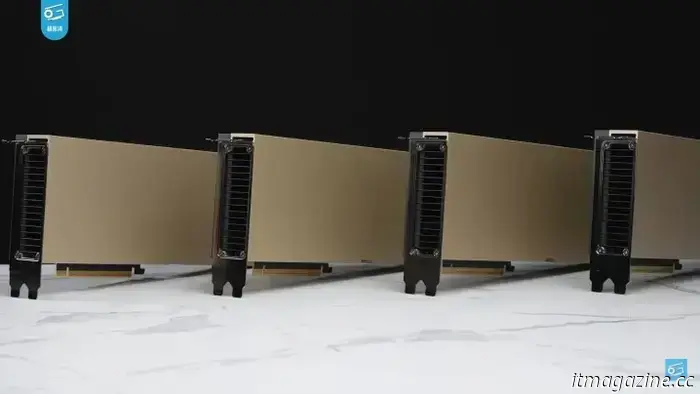
Once the excitement around AI fades, I hope Nvidia shifts its focus back to gaming.
Nvidia appears to have shifted its focus away from gaming. Following its underwhelming Blackwell RTX 50 launch and the surge in its stock prices due to H100s being utilized for various AI training purposes, the company's marketing strategy has become quite exaggerated, suggesting that users should be satisfied with their artificial frames. It has become evident that Nvidia is now more of an AI company. I truly hope this trend doesn’t persist.
This is the same company that introduced legendary gaming graphics cards like the 1080 Ti and the astonishing 4090. It took dynamic upscaling mainstream with DLSS and played a significant role in making ray tracing somewhat feasible. However, it has been obvious for several years that gaming is not Nvidia’s primary priority, and the past year has made it feel even more like a secondary concern.
I sincerely hope that if the AI frenzy subsides or the bubble bursts, Nvidia will return to its origins and produce exceptional gaming hardware once again.
If gaming were to regain a higher priority for Nvidia, it would have to adopt a more serious approach. This would involve acknowledging some of the negative habits it has developed recently. Rather than taking the gaming market for granted, it would need to adopt a more aggressive pricing strategy, making its premium graphics cards more accessible.
This might even mean refraining from undermining its board partners with excessively designed Founders Editions, allowing them to innovate with their designs without exorbitant costs. Perhaps Nvidia could entice EVGA to return as well? How exciting would it be to see KINGPIN cards return?
Moreover, it would need to start offering more than 8GB of VRAM on its entry-level graphics cards.
One thing I wish it would do is to be more transparent about its products. Jensen Huang's assertion that the RTX 5070 would deliver RTX 4090-level performance (“with AI”) is nearly an outright falsehood—it doesn’t consistently outperform the 4070 Super. Nvidia could eliminate misleadingly labeled graphs and provide genuine frames per second comparisons against both its own products and competitors, as well as showcase native performance, much like AMD did during its recent RX 9070 XT launch.
I still appreciate the extravagant halo cards.
I am a vocal critic of Nvidia’s monopolistic and exploitative practices. The price hikes seen in recent generations have been outrageous, and the RTX 50 launch has been truly frustrating. However, I would be dishonest if I claimed I didn’t enjoy the absurdity of its Titan-like halo cards. The RTX 1080 Ti, RTX 3090 Ti, and RTX 4090 stand out, while I’m less enthused about the RTX 5090, yet it remains extraordinary. Just look at how small the actual PCB is. Notice how the power connectors are melting again due to these outrageous graphics cards.
EVGA Kingpin GPUs featured some of the most outlandish designs ever. They’ve consistently been the fastest cards available at the time of their release. The part of me that loves to see impressive specifications revels in what the hardware can achieve, while my seasoned tech journalist self appreciates the innovative ways they pushed the boundaries of possibility.
It would be great if graphics cards were more competitive, and I would love to see AMD challenge for the top position again, even if it may not be financially prudent. Yet, I also want Nvidia to continue its innovative antics. Why not create a 1,000W GPU that requires its own power supply?
Engage more gamers.
If Nvidia were to prioritize gaming again, it could make some of its most impressive features accessible to a broader audience. Currently, its premier gaming features, like DLSS and ray tracing, are effectively locked behind its highest-end graphics cards. Even nearly seven years after their introduction with the RTX 20 series, few people I know utilize ray tracing unless they own top-tier graphics cards.
And how many people do you know with an XX90-class card? I’m in this industry and only know a handful.
DLSS should be just as effective on an XX60 card as on an XX90. The primary advantage of high-end cards is their local rendering power that lower-end cards lack. Equipping them with more Tensor cores to enhance DLSS performance compared to cards that truly require the assistance seems misguided.
The same logic applies to ray tracing. The 5090 has ample power to achieve high frame rates in most games. Having nearly four times the RT cores of the 5070 appears inequitable. The 5070 is the one that requires that additional support for ray tracing. Yes, make the future 6090 the fastest card across the board, but couldn’t we allow lower-end cards to enable ray tracing without major compromises?
Return to gaming.
Nvidia truly mismanaged the RTX 50 series, and the RTX 40 series wasn’t particularly impressive either. Nevertheless, its declining reputation doesn’t have to keep deteriorating if it begins to value gamers more seriously. The AI boom will not last



Other articles
 Is this television the genuine "OLED Killer"?
Hisense introduced the first RGB mini-LED at CES, but Sony has now revealed its incredibly impressive prototype version.
Is this television the genuine "OLED Killer"?
Hisense introduced the first RGB mini-LED at CES, but Sony has now revealed its incredibly impressive prototype version.
 In what ways will Spider-Man 4 revamp the MCU’s web-slinger?
As Spider-Man 4 is currently in production, it prompts curiosity about how Marvel's sequel to No Way Home will influence the webslinger and his role within the MCU.
In what ways will Spider-Man 4 revamp the MCU’s web-slinger?
As Spider-Man 4 is currently in production, it prompts curiosity about how Marvel's sequel to No Way Home will influence the webslinger and his role within the MCU.
 Google is on the verge of completely transforming Android gaming.
Google is significantly transforming mobile gaming on Android by implementing performance optimization, ray tracing, and a variety of new additions to the library.
Google is on the verge of completely transforming Android gaming.
Google is significantly transforming mobile gaming on Android by implementing performance optimization, ray tracing, and a variety of new additions to the library.
 The iPhone 17 Slim is expected to be sleek, though it won't be Apple's thinnest model.
Recently, there has been considerable discussion about a sleeker version of the iPhone 17. This device has been a topic of speculation for several months, referred to in various reports as the iPhone 17 Slim and the iPhone 17 Air, though neither name has been officially verified. The most recent report adds further backing to how […]
The iPhone 17 Slim is expected to be sleek, though it won't be Apple's thinnest model.
Recently, there has been considerable discussion about a sleeker version of the iPhone 17. This device has been a topic of speculation for several months, referred to in various reports as the iPhone 17 Slim and the iPhone 17 Air, though neither name has been officially verified. The most recent report adds further backing to how […]
 Samsung's upcoming headphones may be designed for Shokz.
Samsung is said to be developing a new pair of headphones that may compete in the bone-conduction market.
Samsung's upcoming headphones may be designed for Shokz.
Samsung is said to be developing a new pair of headphones that may compete in the bone-conduction market.
 New specifications suggest that the OnePlus Pad 2 Pro may compete with the iPad Pro.
If you’re looking for a high-performance tablet, you might want to think about the Apple iPad Pro or the soon-to-be-released OnePlus Pad 2 Pro.
New specifications suggest that the OnePlus Pad 2 Pro may compete with the iPad Pro.
If you’re looking for a high-performance tablet, you might want to think about the Apple iPad Pro or the soon-to-be-released OnePlus Pad 2 Pro.
Once the excitement around AI fades, I hope Nvidia shifts its focus back to gaming.
When Nvidia's AI boom eventually comes to an end and it can no longer generate profits effortlessly, I sincerely hope it recalls its gaming heritage to create excellent GPUs once more.
